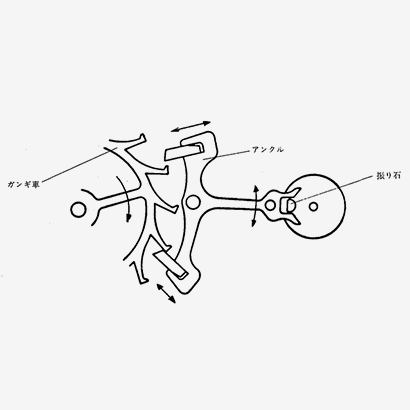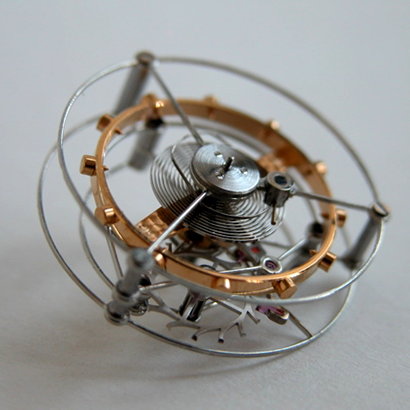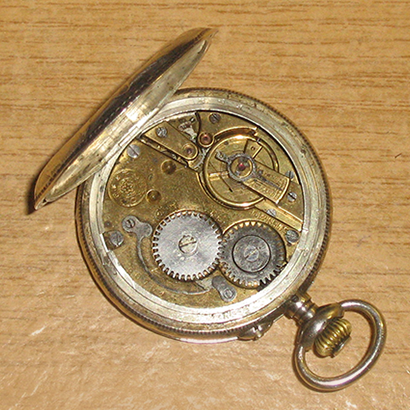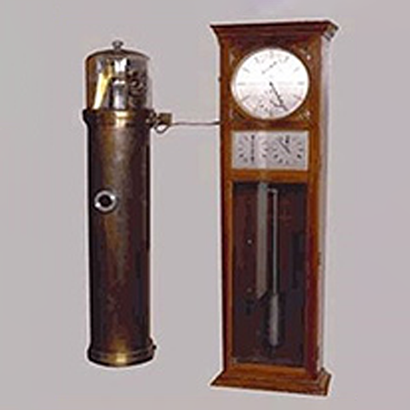The escapement of Big Ben
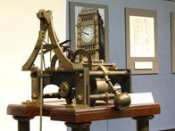
Although the invention and improvement of escapements had turned entirely in the direction of interior clocks and watches, the Great Clock of Westminster in London, commonly known as Big Ben, which was installed in 1859, was equipped with an escapement that would earn a place in the history of timepieces and become the pride of the nation.
The plan that the Royal Astronomical Society had put forth for the construction of the Great Clock had a very high degree of difficulty. The clock face was to be nearly nine meters across, the hands were large and heavy, and at the top of the tower, the clock would be subject to the influences of wind and rain. Yet under these conditions, it would need to remain accurate to within one second a day and chime every quarter hour.
To overcome this great hurdle, Edmund Beckett Denison, who was a member of the Privy Council, devised a revolutionary mechanism called the double three-legged gravity escapement.
Rotating 60 degrees at a time, the escape wheel lifts one of two legs on either side, in turn, and these legs alternately kick the pendulum.
Unlike regular escapements, with this mechanism the escape wheel itself does not apply any force to the pendulum. Instead, the escape wheel’s force is used only to lift the legs on either side of the pendulum, and the pendulum is moved by the force of the legs when they fall back. Because the dead weight of the legs provides the power, the pendulum is kept in motion by a consistent force, maintaining high precision. If the pendulum were moved by the force of the escape wheel, the fluctuating burden placed on the clock hands by wind, rain, and snow, etc. would alter the force applied to the pendulum, reducing its precision. The gravity escapement can be considered the ideal escapement for a tower clock.
Although the pendulum of Big Ben measured 3.9 meters in length and weighed 300 kg, the design allowed it to avoid friction and shocks sustained by the escapement and not succumb to sudden increases in weight on the clock hands.
This was a truly revolutionary invention, and with the escapement designed all those years ago, the clock still operates at an accuracy of within one second per day.
The same mechanism is used in highly precise tower clocks around the world today.



